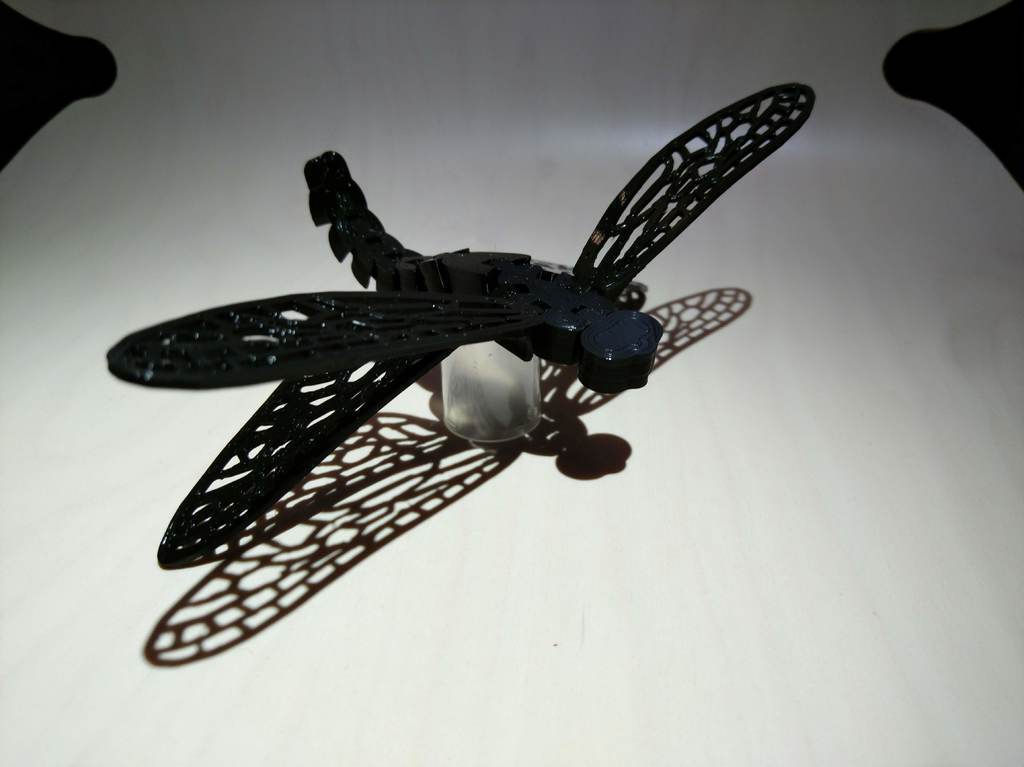

The modalĪnalysis technique was also applied to understand the wings' safe working conditions, helpful in Served in the heat-treated samples in comparison to non-heat treated samples. The flapping test at room temperature tested the wings, and improved performance was ob. (vinyl chloride) PVDF and polyvinylidene fluoride PVC by using the electrospinning technique. The authors examined a lightweight, safe wing using poly Efforts were done in the past and are still being taken Presently, the MAVs are being highly considered in applications likeĭefense, security, environment protection, wildlife conservation, toy industry, construction, traf-įic management, and at times of disaster.
#DRAGON FLY WINGS 3D MODEL FREE DOWNLOAD PORTABLE#
Micro air vehicles (MAVs) are small portable flying machines designed to per-įorm some specific tasks. The present study can be useful for designing and manufacturing new generation MAV wings for different applications. The modal analysis technique was also applied to understand the wings' safe working conditions, helpful in predicting the safe working conditions by the ANSYS software. The flapping test at room temperature tested the wings, and improved performance was observed in the heat-treated samples in comparison to non-heat treated samples. The authors examined a lightweight, safe wing using pol y (vinyl chloride) PVDF and polyvinylidene fluoride PVC by using the electrospinning technique. Efforts were done in the past and are still being taken up to fulfill the need for smart MAVs. Presently, the MAVs are being highly considered in applications like defense, security, environment protection, wildlife conservation, toy industry, construction, traffic management, and at times of disaster. Micro air vehicles (MAVs) are small portable flying machines designed to perform some specific tasks. A dragonfly forewings' microstructure of surface, cross section, and the vein distribution was studied The 3D models of three different cross section of the forewing vein were established Aerodynamic performance of three forewing models during gliding was analyzed The results of this study may provide the basis for a novel bionic concept of flapping wing microaircraft design. It was indicated that among the tested models, the forewing model with oval‐shaped hollow tubular veins has better flight efficiency and aerodynamic characteristics. The numerical simulation results indicated that the vein structure has a considerable influence on the lift, drag, and lift–drag ratio of the P. Fluid dynamics analysis of these three forewing models under different angles of attack during gliding was carried out by FLUENT software, and subsequently, the influence of the dragonfly forewing vein structure on its flight characteristics was analyzed. Three‐dimensional models of three different structures of the forewing vein, including an oval‐shaped hollow tube, a circular hollow tube, and a circular solid tube, were established. In this study, the forewing of a dragonfly (Pantala flavescens (Fabricius)) was used as a research object to explore the microstructure of the surface, cross section, and the vein distribution. Their wings not only support a variety of loads during flight but also maintain high‐efficiency flight characteristics. Dragonflies have excellent flight characteristics, which are inextricably related to the characteristics of their wings.


 0 kommentar(er)
0 kommentar(er)
